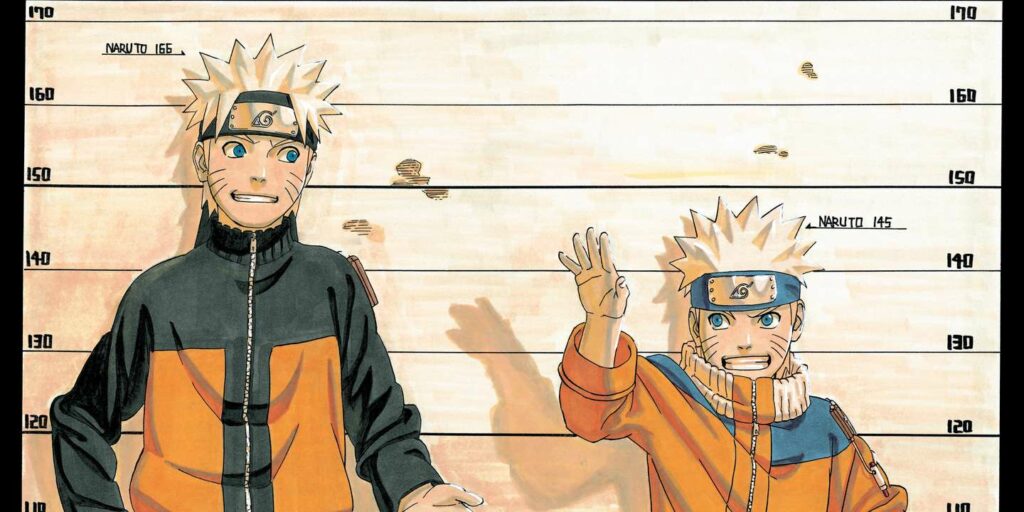
The adventures may have ended in France at the end of 2016, the best-selling manga naruto continues to inspire the French. Since its epilogue, it has still sold 8.5 million volumes, culminating in total sales of the series in France at 26.5 million copies. As for the first volume of narutotwenty years after its discovery in France, it remains the best-selling manga album (and even one of the books) in the country in 2020 and 2021.
Scores that are not about to run out of steam: the Franco-Belgian publisher Kana, which imported the ninja tornado, is reissuing its bestseller from Friday May 6 in a new edition called « Hokage » (the term that refers to the head of the village of Naruto): a large-format double tome containing color pages from the time of its release in the Japanese preprint magazine Weekly Shōnen Jump from 1999. Readers will rediscover the epic story of Naruto Uzumaki, an orphan who seeks to become the greatest ninja and leader of his village, Konoha. Despised from a young age because a destructive demon – Kyubi the nine-tailed fox – was sealed in his body, the young shinobi will win the friendship and respect of all by his perseverance and loyalty.
The new object, which does not exist in Japan and was designed in Paris and Brussels, highlights the work of mangaka Masashi Kishimoto, who is not stingy with large action scenes, explosions and spread out drawings. on double boards. It will not eclipse, however, the original pocket version which will continue to be produced: the Hokage format is above all intended to rekindle the spark with an already conquered audience, who knows the series, and has perhaps been able to to be formerly weary of it.
“French cultural exception”
New readers, especially the public still in primary school, have been picked up since 2016, when Kana halved the price of the first three volumes, which also explains its recent scores. A choice renewed each year and which is welcomed by Christel Hoolans, general manager of Kana and Lombard editions. « In the wake of the three-euro operation, more volumes 4, 5 and 6 were sold than before, which shows that the series was convincing, and that readers were ready to follow beyond the promotional offer. , that it’s an addictive manga », she explains.
The same year, Boruto, Naruto’s son, also took over in a soap opera drawn by Mikio Ikemoto, Masashi Kishimoto’s former assistant, supervised by the master himself. Without displaying the scores of his father who appears, as an adult, in the new stories, Borutostill being published, has so far sold 1.3 million copies in France and serves as a link between generations of ninjas and readers.
Unlike the whole world and especially Japan – where it is One Pieceanother mastodon and enemy brother born in the same magazine, which is the most appreciated (and still in progress) – Naruto still often wins popularity contests in France. A plebiscite which was also found in the sales rankings for a decade, around the broadcast of the animated adaptation on French television in the mid-2000s, making the publisher Kana say that Naruto constitutes a “French cultural exception”.
Both archetypal and dissonant
Thanks to the confinements and the broadcast of animated series naruto and Naruto Shippuden on various streaming platforms, Netflix and DNA in mind, the ninja has experienced a surge of interest. Before that, on the web, many youtubers, streamers, columnists and personalities regularly referred to narutothus bringing the series to the rank of a « essential work of the manga »as Christel Hoolans describes it. “We are now talking about naruto as dragonball, namely a classic that you must have read if you like manga. Naruto also has a reassuring side, it is a value that parents and grandparents offer without problem, transmit. »

The longevity of naruto Finally, it is due to its intrinsic qualities, which enthused the public at its beginnings. Over 700 weekly episodes, for fifteen years, Masashi Kishimoto not only narrated the initiatory story of a child towards his dream and the discovery of his origins, his journey to tame his inner demon and save his village, but also built up a whole mythology around the rationale and tearing apart of the ninja world. The wealth of life stories of each character, even secondary, antagonists, clans, supernatural powers and political forces has allowed many readers to become attached to a variety of passages and protagonists like Sasuke, Itachi or Kakashi .
Not to mention the affection for the hero, both archetypal and dissonant: Naruto, a brawler and a broken arm in an orange uniform, who clashes in a ninja universe crippled with secrets and conspiracies and whose empathy will command respect from his enemies. Over the course of the series, Masashi Kishimoto has Shikamaru, one of the child ninjas, say a phrase that might sum up how many readers feel about Naruto: “He is the best asset in the village. When you meet him, you want to walk by his side. »

